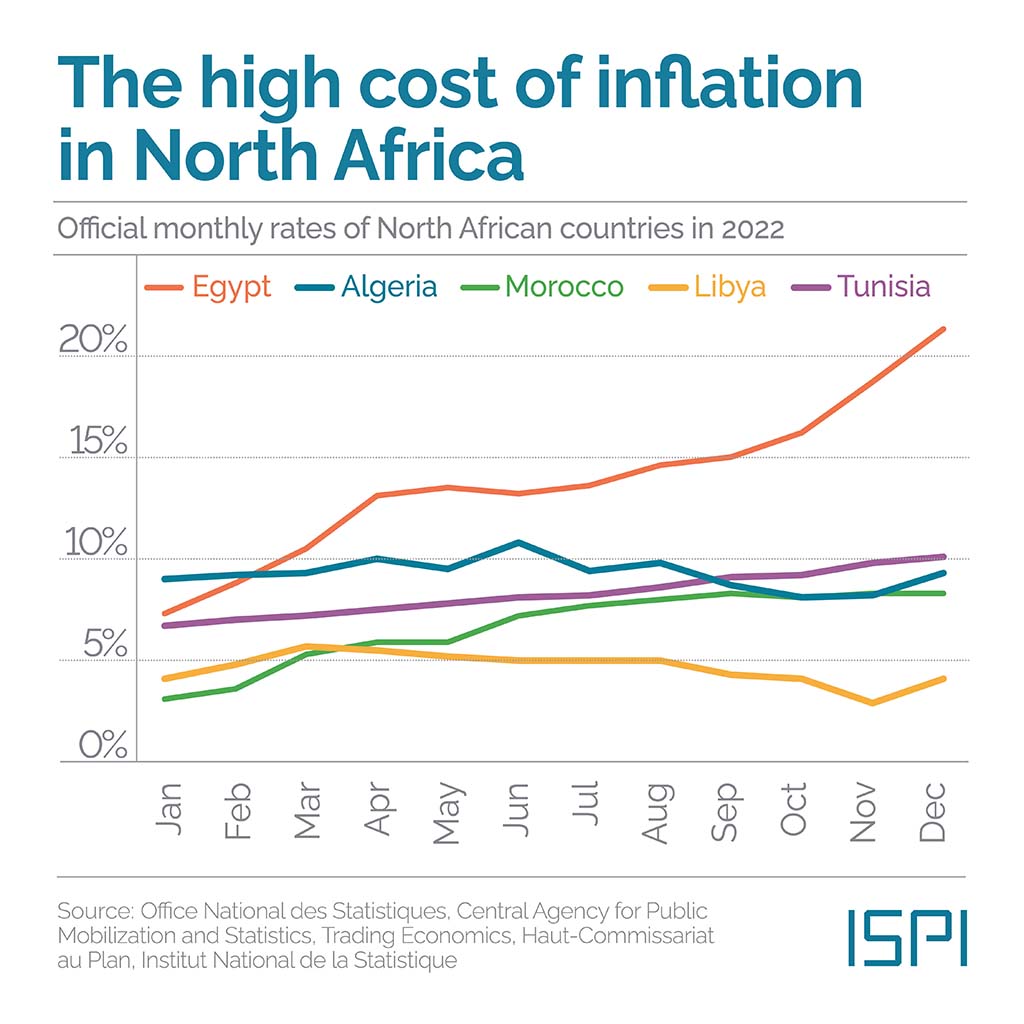Report on Accreditation Pressures, Diversity Policies, and Sustainable Development Goals in U.S. Law Schools
Introduction: Examining Institutional Policies through the Lens of the SDGs
A recent analysis indicates that accreditation agencies, notably the American Bar Association (ABA), are exerting significant pressure on U.S. public law schools to modify hiring and admissions policies to meet specific diversity metrics. This report examines the implications of these pressures in the context of several United Nations Sustainable Development Goals (SDGs), particularly SDG 4 (Quality Education), SDG 10 (Reduced Inequalities), and SDG 16 (Peace, Justice and Strong Institutions). The core issue is the tension between methods used to advance diversity and the legal frameworks promoting equal opportunity and non-discrimination.
Analysis of Accreditation Influence on Educational Institutions
Key Findings on ABA Accreditation Practices
Research based on Freedom of Information Act (FOIA) requests submitted to the top 50 public law schools reveals a pattern of influence by the ABA. These findings challenge the alignment of accreditation practices with the principles of transparent and accountable governance central to SDG 16.
- Of the 45 schools that responded, 20 received direct commentary from ABA accreditors citing failures to meet diversity standards.
- Specific criticisms included having insufficient numbers of minority or female faculty members.
- Schools were also cited for lacking formal Diversity, Equity, and Inclusion (DEI) task forces.
Institutional Responses to Accreditation Demands
The power of accreditation, which is essential for graduates to be eligible for most state bar exams, has led many institutions to alter their operational strategies. These actions have direct relevance to SDG 4 (Quality Education), as they shift institutional focus toward demographic outcomes.
- George Mason University School of Law: Following an extensive ABA investigation into its diversity standards, the school reportedly altered its admissions strategy to achieve the racial composition sought by the accreditor.
- Charleston School of Law: Initially denied ABA accreditation due to concerns over insufficient racial diversity, the school subsequently gained accreditation after appointing a director of diversity.
Legal Frameworks and Alignment with SDG 10 and SDG 16
Constitutional Challenges and Reduced Inequalities
The diversity standards promoted by the ABA exist within a complex legal environment, creating a conflict with established legal precedents and statutory laws. This situation directly engages SDG 10 (Reduced Inequalities), which calls for ensuring equal opportunity and eliminating discriminatory laws and policies, and SDG 16, which champions the rule of law.
- The 2023 Supreme Court ruling in Students for Fair Admissions v. Harvard affirmed that race-based admissions in higher education violate the Constitution’s Equal Protection Clause.
- Several states, including California and Florida, have laws prohibiting public institutions from utilizing racial preferences.
- The ABA’s Standard 206, which mandates diversity and inclusion efforts, appears to conflict with these legal constraints. The ABA formerly stated that state anti-discrimination laws could not be used as a defense for failing to meet its diversity requirements.
Policy Responses and Proposed Reforms for Educational Equity
Governmental and Legislative Scrutiny
The perceived overreach of accrediting bodies has prompted concern from policymakers, reflecting an effort to reinforce the principles of SDG 16 (Peace, Justice and Strong Institutions) by holding quasi-governmental authorities accountable.
- Legislators have expressed concern that accreditors are effectively nullifying state-level bans on DEI mandates.
- A presidential executive order directed the Department of Education to hold accreditors accountable for requiring institutions to engage in practices that may violate federal law.
- In response to this pressure, the ABA has agreed to temporarily suspend the enforcement of its diversity standards.
Proposed Legislative Reform: Higher Education Act Amendment
A proposed amendment to the Higher Education Act (HEA) seeks to provide a lasting resolution. This reform is aimed at ensuring that the pursuit of SDG 4 (Quality Education) and SDG 10 (Reduced Inequalities) is conducted in a manner consistent with legal principles of equal opportunity.
- The amendment would prevent the Department of Education from recognizing any accreditor that imposes hiring or admissions requirements based on race or sex.
- It would affirm the right of an educational institution to establish its own lawful policies, free from the political pressures of accrediting agencies.
Conclusion: Realigning Accreditation with Equal Opportunity and the SDGs
The central argument presented is that accreditation standards should focus on ensuring all students receive a quality legal education, a primary target of SDG 4. The current approach, which allegedly pressures schools toward demographic quotas, is positioned as being in conflict with SDG 10’s goal of reducing inequality through equal opportunity and SDG 16’s mandate for just and accountable institutions that adhere to the rule of law. Lasting reform, such as the proposed HEA amendment, is presented as the necessary step to ensure that the objectives of providing quality education and fostering equality are pursued by removing barriers for all applicants, thereby creating a fair and level playing field for every aspiring attorney.
SDGs Addressed in the Article
SDG 4: Quality Education
- The article is centered on higher education, specifically law schools in the United States. It discusses admissions policies, faculty hiring, and the core purpose of accreditation, which is to “ensure that all students receive adequate preparation to embark on their legal careers.” The debate over diversity standards directly impacts the principles of access and quality in tertiary education.
SDG 10: Reduced Inequalities
- This is a central theme, as the article discusses alleged discrimination and inequality of opportunity based on race and sex. It highlights the conflict between policies aimed at increasing diversity (“race- and sex-based hiring and admissions preferences”) and the principle of equal opportunity for all applicants, as affirmed by the Supreme Court and state laws. The article argues for removing barriers to create a “level and fair playing field,” which is the essence of reducing inequalities.
SDG 16: Peace, Justice and Strong Institutions
- The article examines the role and power of institutions, particularly the American Bar Association (ABA) as an accrediting body. It questions the legality and accountability of the ABA’s actions, accusing it of using “quasi-governmental authority to push institutions toward likely unconstitutional and unlawful practices.” The discussion involves the rule of law, constitutional principles like the Equal Protection Clause, Supreme Court rulings, and legislative proposals, all of which are core components of SDG 16.
Specific Targets Identified
Under SDG 4: Quality Education
-
Target 4.3: By 2030, ensure equal access for all women and men to affordable and quality technical, vocational and tertiary education, including university.
The article directly engages with this target by focusing on access to law school. The core debate is about how to achieve “equal access.” The article critiques the ABA’s method of pressuring schools to achieve specific “racial numbers” and instead advocates for an approach where “Every aspiring attorney, regardless of their race or sex, deserves an equal opportunity to pursue their dream.”
-
Target 4.5: By 2030, eliminate gender disparities in education and ensure equal access to all levels of education and vocational training…
The article’s repeated mention of “sex-based hiring and admissions preferences” and the pressure on schools for having “too few minority or female faculty” connects directly to the goal of eliminating gender disparities and ensuring equal access in education and related professional fields (faculty positions).
Under SDG 10: Reduced Inequalities
-
Target 10.3: Ensure equal opportunity and reduce inequalities of outcome, including by eliminating discriminatory laws, policies and practices and promoting appropriate legislation, policies and action in this regard.
This target is explicitly addressed. The article frames the ABA’s diversity standards as “discriminatory… practices” that are “likely unconstitutional and unlawful.” It cites the Supreme Court’s ruling in Students for Fair Admissions v. Harvard as an action to eliminate such practices and mentions the “proposed amendment to the Higher Education Act” as an example of promoting legislation to ensure equal opportunity.
Under SDG 16: Peace, Justice and Strong Institutions
-
Target 16.6: Develop effective, accountable and transparent institutions at all levels.
The article critiques the ABA as an institution, questioning its accountability by stating it “wields enormous power to dictate how law schools operate” and pressures them into “unlawful practices.” The use of Freedom of Information Act (FOIA) requests to uncover the ABA’s influence highlights a push for transparency and accountability.
-
Target 16.B: Promote and enforce non-discriminatory laws and policies for sustainable development.
The entire article is an argument for the enforcement of non-discriminatory laws. It references the Constitution’s Equal Protection Clause, state anti-discrimination laws in California and Florida, and a Supreme Court decision as the legal framework that should be enforced over the ABA’s accreditation standards, which are presented as discriminatory.
Indicators for Measuring Progress
Indicators for SDG 4 (Quality Education)
- Proportion of students in tertiary education by race and sex: The article implies this indicator when it mentions George Mason University shifting its “admissions strategy to achieve the racial numbers the ABA wanted.”
- Proportion of faculty in tertiary education by race and sex: This is implied by the critique that schools received for having “too few minority or female faculty.”
Indicators for SDG 10 (Reduced Inequalities)
- Existence of laws and policies ensuring equal opportunity: The article explicitly mentions the Supreme Court ruling in Students for Fair Admissions v. Harvard and state laws in California and Florida that “prohibit public institutions from using racial preferences.” The proposed “amendment to the Higher Education Act” is another example.
- Prevalence of discriminatory policies and practices: The ABA’s “Standard 206, which focuses on diversity and inclusion” and its pressure on schools to adopt “race- and sex-based hiring and admissions preferences” are presented as indicators of such practices.
Indicators for SDG 16 (Peace, Justice and Strong Institutions)
- Institutional policies promoting diversity and inclusion: The article mentions the creation of “diversity, equity, and inclusion (DEI) task forces” and the appointment of a “director of diversity” at Charleston School of Law as measurable institutional actions.
- Enforcement actions by accrediting bodies: The fact that “20 received commentary from accreditors that explicitly highlighted their failure to meet the ABA’s diversity standards” serves as an indicator of the institution’s (ABA’s) policy enforcement.
- Adoption of non-discriminatory legislation: The article points to the “proposed amendment to the Higher Education Act” as a measurable legislative action to enforce non-discrimination.
Table of SDGs, Targets, and Indicators
| SDGs | Targets | Indicators Identified in the Article |
|---|---|---|
| SDG 4: Quality Education |
4.3: Ensure equal access for all women and men to… tertiary education.
4.5: Eliminate gender disparities in education and ensure equal access… |
– The “racial numbers” in student admissions that the ABA required. – The number/proportion of “minority or female faculty.” |
| SDG 10: Reduced Inequalities | 10.3: Ensure equal opportunity… including by eliminating discriminatory laws, policies and practices… |
– Existence of “race- and sex-based hiring and admissions preferences.” – Supreme Court rulings and state laws prohibiting racial preferences. – Proposed legislation (amendment to the Higher Education Act) to bar discriminatory requirements. |
| SDG 16: Peace, Justice and Strong Institutions |
16.6: Develop effective, accountable and transparent institutions…
16.B: Promote and enforce non-discriminatory laws and policies… |
– The ABA’s “Standard 206” on diversity and inclusion as a policy to be scrutinized. – Number of schools cited by the ABA for failing to meet diversity standards. – Establishment of “DEI task forces” or a “director of diversity” as an institutional response. – Enforcement of the Constitution’s Equal Protection Clause against institutional policies. |
Source: pacificlegal.org







